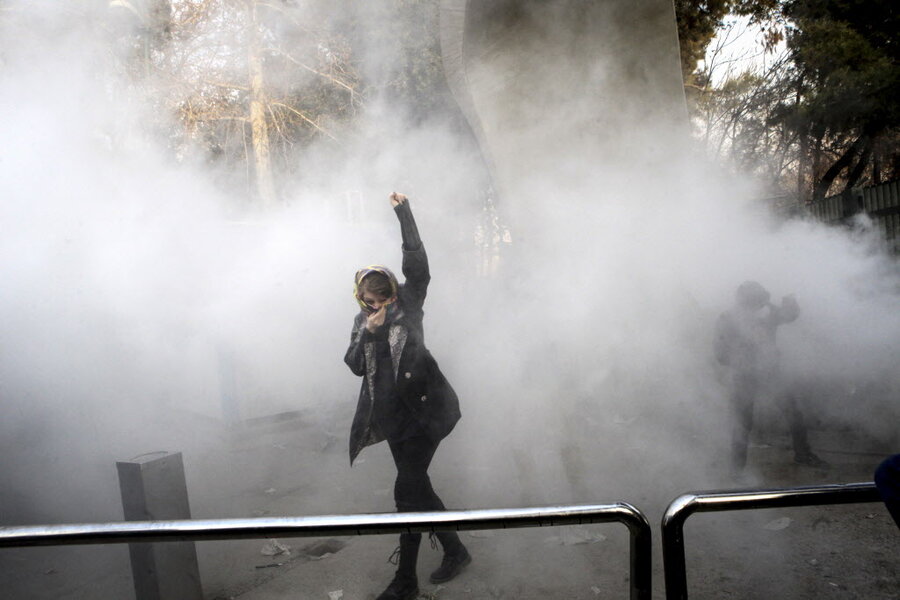Iran boils again
Loading...
The protests that leapt across Iran last week, and intensified over the weekend, may share one thing with the recent fires in southern California: No one knows exactly where they will go or how long they will last.
Conservative opponents of the more moderate Iranian President Hassan Rouhani may have lit the match by encouraging antigovernment demonstrations. But they have quickly morphed into outrage over a wide array of grievances, from the price of eggs (a symbol of wider frustrations with the struggling economy) to a more general disenchantment with life under a strict form of Islamic rule that has curtailed open dialogue for nearly four decades.
Iranians are also very aware that the regime has been aiding various political and insurgent groups abroad, and even President Bashar al-Assad’s brutal regime in Syria, while they suffer at home. The chat “Leave Syria, remember us,” has been heard.
At this writing, hundreds of protesters reportedly have been jailed and at least 21 people killed. Mr. Rouhani has said that “the people are completely free to make criticism and even protest,” but he has also indicated there will be limits on what is allowed.
International calls for the protests to remain peaceful, for human rights to be respected, and for the government to take a restrained approach in its response seem appropriate.
President Trump tweeted, “The U.S. is watching.” But the regime should be given no excuse to claim (as supreme leader Ayatollah Ali Khamenei already has) that foreign powers are behind the demonstrations, which clearly are the result of myriad domestic frustrations, not foreign intervention.
Nearly a decade has passed since 2009 when Iran’s so-called Green Movement produced a similar level of public protest, in that case over the result of disputed elections. Those protests burned themselves out without effecting any real change.
What is different today is the large number of Iranians carrying smartphones, perhaps as many as 48 million in a country of 80 million people. They are not only able to learn about what’s happening in the outside world, they are also using apps such as Instagram and Telegram to share their feelings with others inside Iran. The government has put restrictions on those services. Iranians will have to find other ways to communicate.
It remains to be seen whether the government will crack down more harshly. But the protests show how Iranians continue to chafe against a theocratic government that ill fits a country with an educated and sizable middle class, as well as a large number of youths eager for jobs and hopes for a better life.
The top may not blow off the kettle during this outbreak of protests. But the pressure for reform that keeps building within Iran will never be vented without a transition to a freer society.







